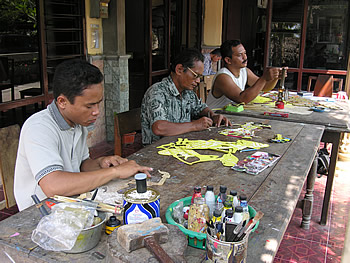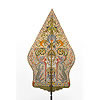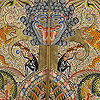How Wayang Kulit Are Made
The art of creating wayang kulit is incredibly detailed. Several artists are usually involved in the different stages required to make a single puppet. These artists often learn the art from family members and apprentice with a master, and in the past they may have also studied at the kraton (palace).
Wayang kulit are made from water buffalo hide, cut and punctured by hand, one hole at a time. The artists who carve and puncture the water buffalo hide begin by scratching the outline and details of the wayang figure onto the rawhide. The carving and punching of the rawhide, which is most responsible for the characters’ portrayal and the shadows that are cast, are guided by this sketch. A mallet is used to tap special tools, called tatah, to punch the holes through the rawhide. The tool only comes in two basic shapes, flat and curved, but they do come in a variety of sizes. Most punches require several turns of the tatah to achieve the desired detail. This is the most time-consuming stage of the puppet-making process.
Once the hole-punching is complete, the puppets are painted in layers of water-based paints, heavily decorated with extraordinarily fine details, and often finished with gold or bronze leaf.
The sticks attached to the base and articulated limbs of the wayang kulit are made from water buffalo horn and / or wood. Making the puppet sticks from horn involves a complicated process of sawing, heating, hand-molding, and sanding until the desired effect is achieved. When the rest of the puppet is ready, the artist attaches the handle by carefully and precisely molding the ends of the horn around the individual wayang figure and it is secured with a needle and thread.
A large character may take five months or more to produce.





